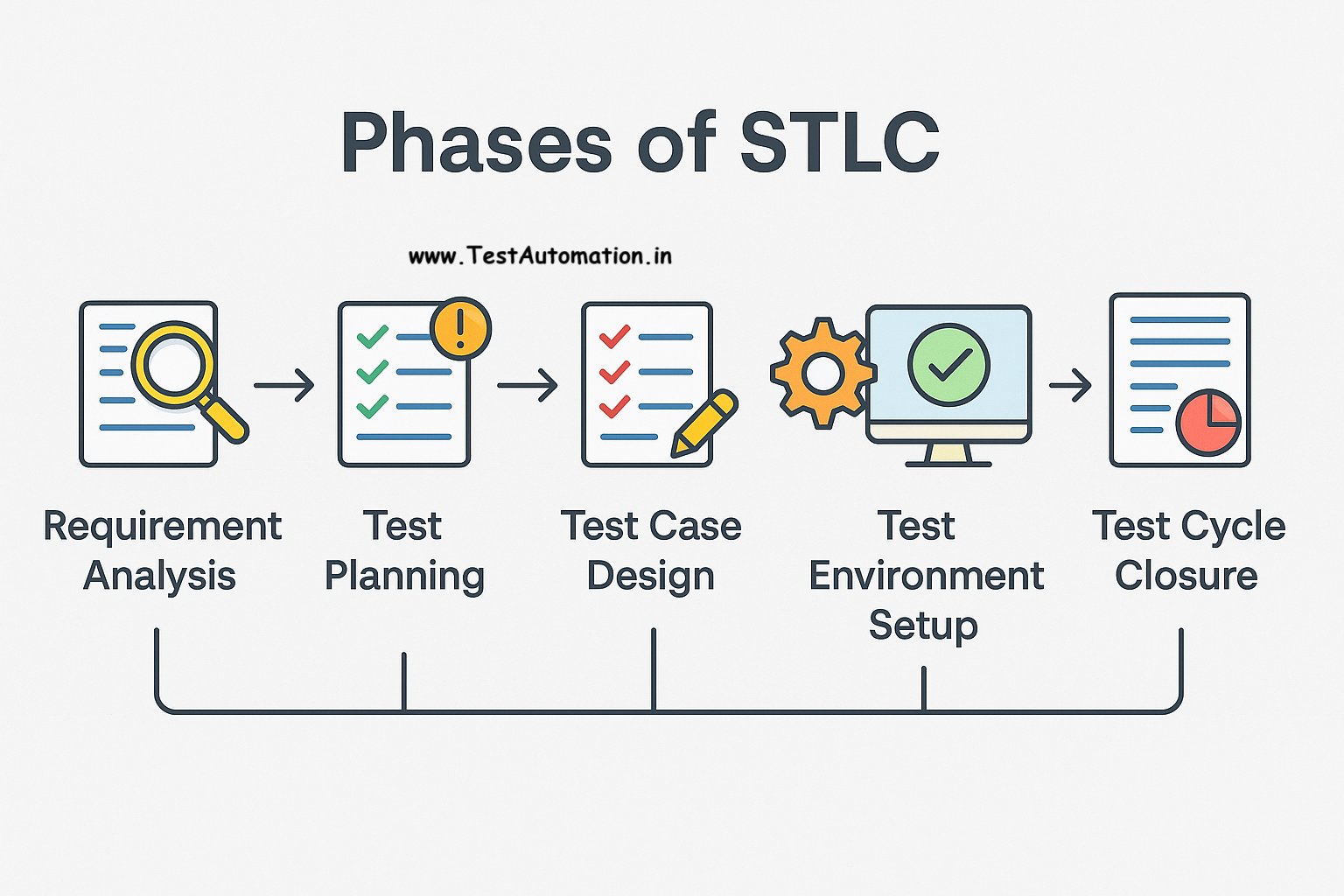Let’s learn the V-Model in software testing step by step, in a very simple and clear way
🔶 What is the V-Model?
The V-Model is a software development model where each step of development has a matching testing phase. It’s called the “V-Model” because if you draw it, it looks like the letter “V” — development goes down the left side, and testing climbs up the right side.
🔶 Key Idea Behind the V-Model
Each development activity (like writing requirements or designing the system) is linked to a testing activity (like writing test cases or doing system testing). You verify on the left side and validate on the right side.
Think of it as “build it, then test it step-by-step.”
🔷 The V-Model Diagram (Visual Representation)

Let’s now understand each stage in simple words.
🔶 Left Side – Development Phase (Planning/Design)
- Requirements (User Needs)
- What does the user want?
- Example: “User should be able to log in.”
- System Design
- How will the overall system work?
- What components are needed?
- High-Level Design
- Break system into modules.
- Example: Login module, Dashboard module.
- Low-Level Design
- Details of how each module will work.
- Data structures, algorithms, etc.
- Coding
- Actual development begins.
- Programmers write code.
🔶 Right Side – Testing Phase (Verification/Validation)
- Unit Testing
- Test each small piece of code.
- Done by developers.
- Example: Is the login function working correctly?
- Integration Testing
- Test how modules work together.
- Example: Does the login module properly open the dashboard?
- System Testing
- Test the entire application as a whole.
- Example: Does the whole app work smoothly?
- Acceptance Testing
- Done by the customer or QA team.
- To check if the system meets real user needs.
- Example: Does the app behave as expected for the user?
🔶 Why Use the V-Model?
✅ Simple and easy to understand
✅ Testing is planned early (along with development)
✅ Issues can be caught early (before coding begins)
✅ Quality improves as each stage is verified and validated
🔶 Real-Life Example – Making a Cake 🍰
Let’s say you’re making a cake. Here’s how the V-Model applies:
| Development (Left Side) | Testing (Right Side) |
|---|---|
| Gather recipe | Taste final cake (Acceptance) |
| Plan ingredients | Check if cake bakes properly |
| Decide steps | Test if cream, layers work well |
| Prepare tools | Check if oven heats correctly |
| Start baking (coding) | Taste small bits (unit testing) |
🔶 When to Use the V-Model?
Use it when:
- Requirements are clear and fixed
- You want strong documentation
- You want to test each stage early
🔚 Summary
- The V-Model connects development and testing stages side by side.
- It helps find defects early.
- It’s a structured approach, best for projects where things are well-planned.
Would you like me to quiz you, make a diagram for you, or explain how it compares with other models like Agile or Waterfall?



